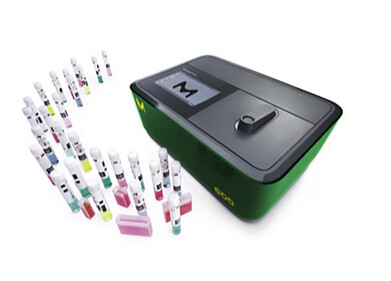Laboratory products
What Are the Recent Trends in Chromatography?
Jul 03 2021
From forensic science to cancer research, chromatography is one of the most useful analytical techniques in a scientist’s arsenal. Used to separate the individual components of a chemical substance or sample, chromatography methods can be divided into four categories – liquid, gas, thin layer and paper. All are used to isolate and analyse the different components of a chemical compound and contribute to chromatography’s enormous relevance across a wide range of industries and sectors. Read on to find out more about recent trends in chromatography and how new breakthroughs are reimagining the method.
-
High performance liquid chromatography (HPLC)
Powerful and versatile, high performance liquid chromatography (HPLC) is used to identify and quantify the unique components of a sample. The high level of precision makes it the chromatography method of choice for wide range of applications, including water pollution monitoring and analysis of pharmaceutical drugs.
-
Super critical fluid chromatography (SCFC)
High-performance methods like super critical fluid chromatography are revolutionising separation processes in laboratories around the world. Often used alongside HPLC, the technique uses pressure and temperature changes to isolate components. Fast analysis speeds and high efficiency separation makes useful for food analysis. The technique is also being used to develop antibiotics, steroids and other drugs.
-
Advanced instruments
Instrument manufacturers are continually exploring new ways to improve efficiency and accuracy in the lab. The latest state-of-the-art chromatography instruments are more compact than ever, occupying less bench space and offering a low environmental footprint.
-
Fighting crime
Chromatography has been a valuable forensic tool for decades. Over the past few years, micellar electro kinetic capillary chromatography (MEKC) has armed forensic scientists with even deeper insight into crimes. It’s used to isolate the ionic dyes and pigments present in inks and is also an effective way to detect explosive residues released by gunpowder.
-
New solid-phase extraction (SPE) techniques
Prior to analysis, techniques such as solid-phase extraction are used to prepare and purify samples. It’s incredibly useful in analytic laboratories and helps to deliver faster and more accurate results during processes like HPLC and SCFC. By removing unwanted interferences from the sample, SPE improves sensitivity, increases column lifetime, minimises ion suppression and reduces instrument downtime.
Want to know more about the novel chromatography and sample preparation techniques being championed at modern laboratories? Writing on behalf of Porvair Sciences, James Edwards and George Whitfield introduce the game changing Microlute™ CP solid phase extraction range in ‘Evaluation of basic analytes using a novel hybrid reversed phase method for solid phase extraction by HPLC-MS.’
Digital Edition
Lab Asia 31.6 Dec 2024
December 2024
Chromatography Articles - Sustainable chromatography: Embracing software for greener methods Mass Spectrometry & Spectroscopy Articles - Solving industry challenges for phosphorus containi...
View all digital editions
Events
Jan 22 2025 Tokyo, Japan
Jan 22 2025 Birmingham, UK
Jan 25 2025 San Diego, CA, USA
Jan 27 2025 Dubai, UAE
Jan 29 2025 Tokyo, Japan



















